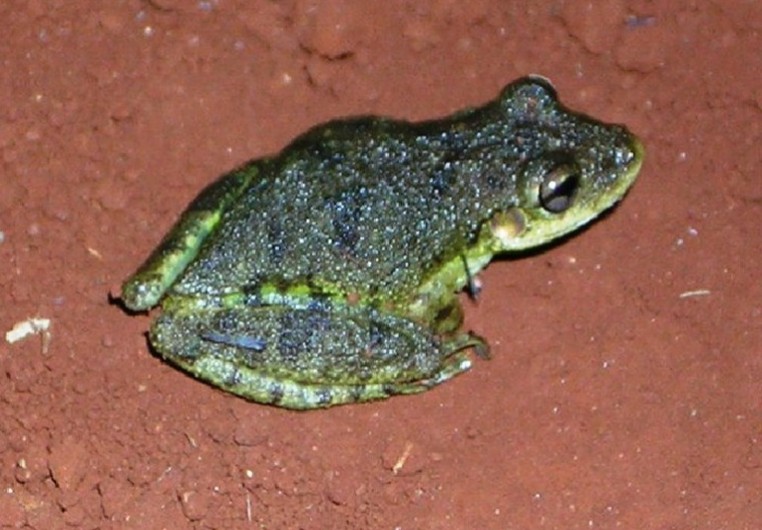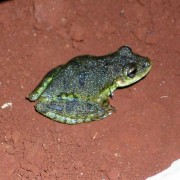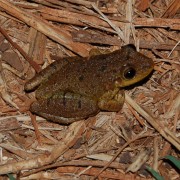Biodiversity
 Fuscous-Blotched Treefrog
Scinax fuscovarius | A. Lutz, 1925
Fuscous-Blotched Treefrog
Scinax fuscovarius | A. Lutz, 1925

Vocalization

Characteristics: Medium-size species measuring 3.7cm to 4.8cm in length. Its back is dark brown or grayish-brown, and narrow spots, and dark lines similar to an X. Greenish individuals may also be found. Its belly is whitish with dark spots. The thighs have strong contrasting yellow spots with black areas on its posterior portion.
Distribution: Central, Southern, and Southeastern Brazil and parts of Argentina, Uruguay, Paraguay, and Bolivia.
Habitat: Open forest formations, in fields, pastures, rivers, streams, lakes, ponds, wetlands, and marshes. During the mating season, this species is found on the margins stagnant water accumulations, such as lakes, dams, and floodplains, usually on the ground.
Habits: Crepuscular, nocturnal, and arboreal. Hiding during the day in holes in trees or on the ground, cracks in trees, or among rocks.
Diet: Small insects and arthropods, such as spiders.
Breeding: Oviparous, spawning occurs in the spring and summer months and is associated with rain. The number of mature eggs may exceed 3,000, and spawning may produce 1500-2000 small, pigmented eggs, laid on aquatic vegetation. They are found vocalizing on dry soil, or at low heights on vegetation, on the banks of stagnant water accumulations, dams or marshes.
UFRA: Species seen in the ten environments, but often in Wetlands with herbaceous plants.





